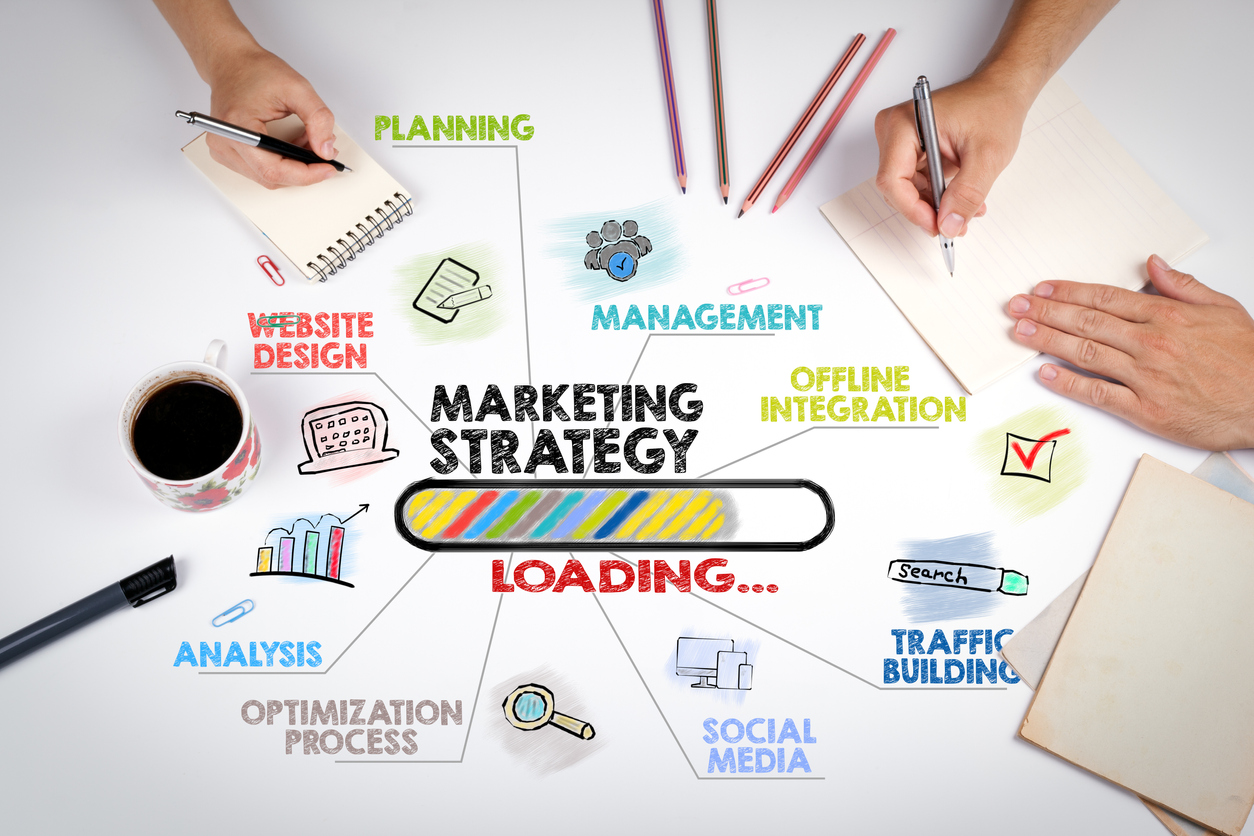
7 Tips for Easy AdWords Account Management for Large Budgets
An annual AdWords Audit is a great way to discover large mistakes and low-hanging fruit. It’s like long overdue gardening – all those weeds just start to get in the way of the good stuff!
But what can you do on a daily, weekly, and monthly basis to make sure performance is in tip-top shape when you have limited time?
You can spend an entire day fixing up your AdWords account and it will look better. But if you don’t maintain it, the flowers will eventually wilt and weeds will creep in (i.e. old tactics become obsolete and your competitors start to outrank you).
On the flip side, a well-tended campaign blossoms (i.e. generates returns) over time.
We’ve effectively managed tons of medium- to large-scale B2B AdWords accounts. We’ll teach you how to run a successful Google Adwords campaign without spending overwhelming amounts of time. Here are 7 steps to an effective AdWords account management strategy.
Ready to roll up your sleeves?
1. Keep Testing
“Never stop testing, and your advertising will never stop improving.” -David Ogilvy, the father of advertising.
As the quote suggests, always test new ads to find a better performer. Always have at least one variation you’re testing your winning (control) ad against.
No ad stays at the top forever because people get tired of seeing the same ad over and over and start to ignore it (this is called ad blindness or banner blindness).
2. Check In On These 3 Parts of an Ad
Which components of an AdWords ad should you monitor and focus on testing? Keep an eye on these 3 areas:
a) Headlines
Look for new words to test in your headlines that evoke more emotion and action.
To start, test two radically different headlines to see which performs better. If you begin by testing something small, you might miss the big money makers..
Here are some ways to test radically different headlines:
- Use numbers or stats versus text.
- Use a question versus a statement.
- Highlight different benefits your product or service offers.
- Highlight different feelings your product or service evokes (comfort, security, etc.)
b) Verbs and Nouns In Descriptions
Test trigger words and power verbs in your description lines (e.g. “increase” versus “boost”).
Words grab attention and evoke emotion in unique ways.
The right word can have a major impact on conversion rates and/or click-through rate (CTR) because they trigger subtly different imagery or feelings in your prospect’s mind.
Instead of “scared”, what about “quivering”?
Instead of “safe”, what about “pure comfort”?
Instead of “enthusiastic”, what about “poured our hearts into it”?
Each power word can resonate differently with different audiences. Choose words that compel your audience.
c) Display URLs
You can change up to two subdirectory paths after your domain URL on your ad (i.e. www.webmechanix.com/path1/path2)
For example, suppose an ad is running for WebMechanix’s PPC services. Rather than a URL of webmechanix.com/ppc-service, test a benefit-driven URL such as webmechanix.com/free-ppc-audit or webmechanix.com/improve-roi/ppc.
Searchers size up how trustworthy the URL looks before clicking, which definitely affects CTR. Therefore, if you can, make your URL more trustworthy.
3. Make Sure Your Results are Statistically Significant
Picture the scene:
An AdWords manager sees a test ad performing better than the original. The manager excitedly decides that this ad is the winner even though it only got five clicks.
In reality, this ad may perform worse if you were to collect more data by exposing it to more prospects.
Without sufficient traffic, your results are likely inconclusive. Use any of the free statistical significance calculators out there to conclude whether your results are statistically significant.
Enter the click-through rate and the number of clicks for each ad to see if you can safely declare a winner. We suggest going with at least 90% confidence.
Important Note: If you’re working with a small AdWords account or in B2B, you may never get enough traffic to come close to reaching statistical significance. So what do you do?
This is where advertising becomes more of an art than a science. You have to get as reasonably close to statistical significance as you can (which may not be very close) and make a judgment call based on limited data.
Rely on your past experience and leverage case studies from other companies in similar industries to guide your decision on which ad is better.
4. Optimize Your Bids
For ads with a great cost per conversion and conversion rate, raise the keyword bids. You want to scale up what’s working by raising the average position of the keywords you’re bidding on.
Ads are low-performing when they have a high cost, low quality score, low conversion rate, or a low CTR.
For these ads, the key to fixing these problems lies in improving the quality score, which we mention here.
If you can’t improve the performance of an ad after a reasonable amount of time trying, pause it and move on.
Here’s a lesser known, juicy money-making tip:
A lower ad position sometimes converts better than a higher one. Maybe this is because people browsing search results may be unaware that the ad at the top is the one that advertisers pay the most for or is the one that’s the most relevant for them.
Test out lowering your bid. You may outsmart competitors by spending less and converting more with a lower average position.
5. Monitor Click-Through Rate (CTR)
A good measure of your ad performance is CTR.
This article from Wordstream shows benchmark CTR’s for different industries. It’s a rough metric you can use to see how you are performing against your industry peers.
Use this metric to identify which ads need improvement, but keep in mind that the numbers are estimates that can get outdated.
Another way to see if you have a healthy CTR is to compare your current with past performance. This isn’t a perfect benchmark either since industry CTR may naturally decline over the years as increased competition or ad blindness makes ads less compelling.
If your CTR is in fact declining, test new ad copy, increase bids, improve quality score, or make sure your ad is still showing (in case it got disapproved or needs updating).
6. Start Using Remarketing
Remarketing is a cheap, effective way of increasing performance.
98% of visitors won’t buy from you the first time they see your product or service. With remarketing, you follow them around the internet with ads as they browse other sites and win them over. And who better to follow around than people who have already visited your site and already know what you have to offer?
Plus, the clicks usually cost a lot less than standard AdWords ads.
And the best part is that you can get super targeted and have very specific offers for very specific target groups. It’s a powerful “hack” to improve return on investment.
7. Monitor Different Industries
Do you have grandparents that still prefer inefficient forms of communication, like snail mail?
Companies can be like this. Many still use old strategies out of habit, even when they’re no longer the best ways of achieving results.
Here’s another lesser-known tip:
Steal marketing strategies from other industries to stay fresh and leapfrog your competition. This was how the marketing legend Jay Abraham found new ideas that exploded his business.
For instance, more sophisticated industries, like consulting, can have documented, systematic processes for gathering more customers through referrals – even asking for a certain number of referrals if they fulfill their duties as part of the contract.
But in newer industries, this isn’t as common because companies haven’t even considered it or believe it will work.
One common way of borrowing from other industries involves getting new ad ideas for your ad or landing page.
Let’s say you are in the B2B private plane industry. You may discover that some B2C eCommerce companies are having great success with a free book offer with an upsell behind it or ads promoting an in-person event with a celebrity in attendance.
You could borrow marketing tactics and adwords techniques to attract valuable prospects to your own website or events.
Conclusion
AdWords account management doesn’t end after an audit. Your success depends on maintaining and growing your “garden.”
While this can be tough to do if you are managing multiple accounts or large amounts of data, these tips will help you zero in on what you have to do, while reducing the time it takes to check in.
You’re competing with competitors who constantly try to improve their own AdWords campaign management. But if you outwit and outwork them, you can get the edge.
Which of these Google AdWords management best practices have you overlooked? Is there anything you have questions on? Let us know in the comments below to continue the discussion and get free help.
Most newsletters suck...
So while we technically have to call this a daily newsletter so people know what it is, it's anything but.
You won't find any 'industry standards' or 'guru best practices' here - only the real stuff that actually moves the needle.






